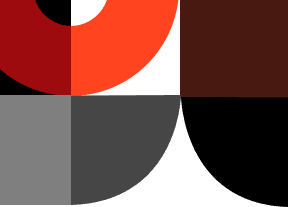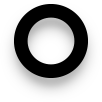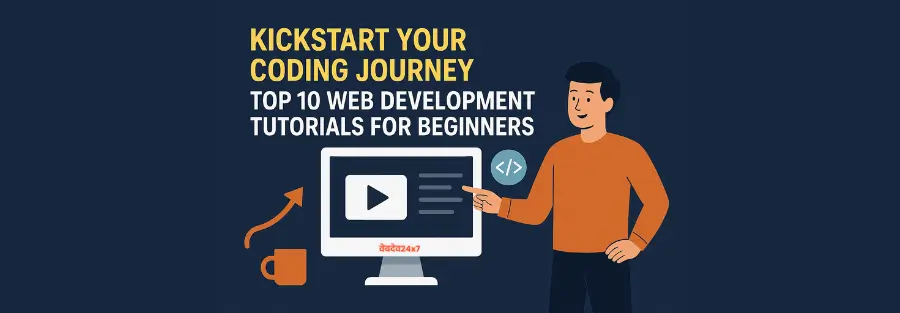Introduction: Diving into Web Development Tutorials for Beginners
So, you’re curious about web development? Fantastic! The world of the internet is built on the foundations of code, and learning to build websites and web applications can be incredibly rewarding. Whether you’re dreaming of creating your own online store, launching a personal blog, or even building the next social media sensation, web development offers endless possibilities. This guide is your starting point.
What is Web Development?
In simple terms, web development is the process of building and maintaining websites and web applications. This involves everything from the initial design and content creation to the coding that makes a website function. It’s a broad field encompassing both the visible parts users interact with (frontend) and the behind-the-scenes operations (backend).
Why Learn Web Development?
There are tons of great reasons to learn web development! Here are just a few:
- High Demand: Web developers are in high demand, making it a stable and potentially lucrative career path.
- Creativity: You get to build things and bring your ideas to life on the web.
- Flexibility: Many web developers enjoy flexible work arrangements, including remote work.
- Continuous Learning: The web is constantly evolving, so you’ll always be learning new skills.
- Personal Projects: Create your own websites for fun, to showcase your portfolio, or to build a business.
This Guide: Your Tutorial Resource
This blog post is designed to be your go-to resource for finding the best web development tutorials for beginners. We’ll cover the core fundamentals, essential tools, and then dive into frontend and backend development tutorials. Let’s get started!
Core Web Development Fundamentals
Before you can build anything fancy, you need to understand the core building blocks of the web. Think of these as the essential tools in your toolbox.
1. HTML: The Foundation of Web Pages
HTML (HyperText Markup Language) is the structure of a webpage. It provides the content and meaning, defining elements like headings, paragraphs, images, and links. It’s the skeleton of your website.
Recommended HTML Tutorial
Codecademy’s HTML Course: Codecademy’s interactive lessons are great for beginners. You learn by doing, with immediate feedback. Look for tutorials that walk you through the basic HTML tags and explain the structure of an HTML document.
2. CSS: Styling Your Website
CSS (Cascading Style Sheets) is responsible for the look and feel of your website. It dictates the colors, fonts, layout, and overall presentation. It’s like the makeup and fashion for your website!
Recommended CSS Tutorial
Mozilla Developer Network (MDN) CSS Documentation: MDN offers comprehensive, well-organized documentation, perfect for both learning and reference. Search for beginner CSS tutorials or courses that cover the basic CSS properties, such as `color`, `font-size`, `margin`, and `padding`.
3. JavaScript: Adding Interactivity
JavaScript adds interactivity and dynamic behavior to your website. It allows you to create features like animations, responsive menus, and interactive forms. JavaScript is the brains behind the operation.
Recommended JavaScript Tutorial
FreeCodeCamp’s JavaScript Algorithms and Data Structures Certification: FreeCodeCamp provides a project-based learning experience, teaching you JavaScript fundamentals while building real-world projects. Start with basic JavaScript tutorials that focus on variables, data types, functions, and DOM manipulation.
Essential Tools for Beginners
Now that you understand the core languages, let’s look at some tools that will make your coding life easier.
Choosing a Code Editor
A code editor is where you’ll write your code. Popular choices for beginners include:
- Visual Studio Code (VS Code): Free, open-source, and highly customizable, with tons of extensions.
- Sublime Text: A powerful and versatile editor. (Requires a license)
- Atom: Another free and customizable editor, also open-source. (Maintenance ended in 2022, but still works.)
Choose one and get comfortable with it! Learn how to navigate the interface, save files, and use basic features like auto-completion.
Understanding the Command Line (Basics)
The command line (also known as the terminal or console) is a text-based interface for interacting with your computer. It might seem intimidating at first, but it’s an essential tool for web development. Learn basic commands like:
- `cd` (change directory): to navigate between folders.
- `ls` (list): to see files and folders.
- `mkdir` (make directory): to create a new folder.
- `touch` (create file): to create a new file.
There are plenty of free online tutorials that will teach you the basics of the command line.
Setting Up Your Local Development Environment
A local development environment is where you’ll build and test your websites on your own computer. This usually involves setting up a web server and, potentially, installing tools like Node.js or Python, depending on your backend choice. The tutorial you choose will likely guide you through this process.
Frontend Web Development Tutorials for Beginners
Frontend development focuses on the user interface – what the user sees and interacts with.
4. React: Building Dynamic User Interfaces
React is a JavaScript library for building user interfaces. It’s incredibly popular for creating dynamic and responsive web applications. It uses a component-based architecture, making it easy to build complex UIs.
Recommended React Tutorial
Scrimba’s Learn React for Free: Scrimba has interactive coding tutorials with screencasts, allowing you to follow along while coding.
5. Angular: A Framework for Complex Apps
Angular is a comprehensive framework (developed by Google) for building large, complex web applications. It provides a structured approach to development with features like two-way data binding and dependency injection.
Recommended Angular Tutorial
Angular’s Official Tutorial: The Angular team provides excellent documentation and tutorials on their official website, suitable for both beginners and more advanced learners.
6. Vue.js: A Progressive JavaScript Framework
Vue.js is a progressive JavaScript framework that is known for its simplicity, flexibility, and ease of integration. It’s a great option for building interactive and dynamic user interfaces.
Recommended Vue.js Tutorial
Vue School: Vue School provides a fantastic variety of Vue.js tutorials to learn everything from basics to advanced concepts.
Backend Web Development Tutorials for Beginners
Backend development deals with the server-side logic – the code that handles data, processes requests, and interacts with databases. This is often less visible to the user but just as crucial.
7. Node.js: JavaScript on the Server
Node.js allows you to run JavaScript on the server, making it possible to use the same language for both frontend and backend development. It’s built on Chrome’s V8 JavaScript engine and is known for its speed and efficiency.
Recommended Node.js Tutorial
The Net Ninja’s Node.js Tutorial: A very accessible and well-structured tutorial. Focus on building simple APIs and understanding how to work with Node.js’s module system.
8. Python (with Django/Flask): Versatile Backend Options
Python is a versatile programming language often used for backend development. Django and Flask are popular Python web frameworks that provide tools and structure for building web applications.
Recommended Python Tutorial (with Django/Flask)
Django Girls Tutorial: This tutorial is designed specifically for beginners, walking you through the process of building a blog with Django. Django is a very easy backend choice for beginners.
9. PHP: A Popular Server-Side Language
PHP is a widely used server-side scripting language, powering a significant portion of the web. It’s especially popular for building dynamic websites and interacting with databases. Consider searching for web development tutorials for beginners specifically with PHP as a starting point.
Recommended PHP Tutorial
W3Schools’ PHP Tutorial: W3Schools offers a straightforward and easy-to-follow PHP tutorial. Be sure to start with the basics, learning PHP syntax, variables, and functions.
More Resources & Next Steps
10. Bonus Tutorial: Responsive Web Design
Responsive web design ensures that your website looks and functions correctly on all devices (desktops, tablets, and smartphones). This is absolutely critical in today’s mobile-first world.
Recommended Responsive Design Tutorial
Google’s Responsive Web Design Fundamentals: Google offers a free, comprehensive course on responsive web design. Learn how to use HTML, CSS, and media queries to create responsive layouts.
Where to Find More Tutorials and Resources
Beyond the specific tutorial recommendations above, here are some great places to find more learning resources:
- Codecademy: Provides interactive courses for many programming languages and web development technologies.
- FreeCodeCamp: Offers free, project-based learning with certifications.
- MDN Web Docs: The Mozilla Developer Network provides excellent documentation for web technologies.
- YouTube: Search for specific tutorials on YouTube – there are countless videos available.
- Stack Overflow: A valuable resource for asking questions and finding solutions to coding problems.
Building Your First Project: Practical Tips
The best way to learn is by doing! Here are some tips for building your first web development project selected in top web development tutorials for beginners:
- Start Small: Don’t try to build the next Facebook right away. Start with a simple project, like a personal website or a basic to-do list app.
- Break it Down: Break down your project into smaller, manageable tasks.
- Be Patient: Learning takes time. Don’t get discouraged if you run into problems.
- Google is Your Friend: Use Google to search for solutions to problems you encounter.
- Ask for Help: Don’t be afraid to ask for help from online communities or mentors.
Conclusion: Your Web Development Tutorials for Beginners Path Begins Now
You now have a solid foundation and a list of fantastic web development tutorials for beginners to get you started. Remember to practice, experiment, and have fun! This post has covered many different tutorials to get you started learning the basics to advanced frameworks. Your learning journey starts now!
Recap of Top Web Development Tutorials for Beginners Recommendations
To recap, here are some key web development tutorials for beginners recommendations:
- HTML: Codecademy
- CSS: MDN
- JavaScript: FreeCodeCamp
- Frontend Frameworks: Scrimba (React), Angular’s Official Tutorial, Vue School
- Backend: The Net Ninja (Node.js), Django Girls Tutorial (Python), W3Schools (PHP)
- Responsive Design: Google
Encouragement and Further Learning
Web development is a rewarding skill to acquire. Keep exploring, keep practicing, and embrace the ever-evolving nature of the web. Don’t be afraid to experiment and try new things. Learning these frameworks, as well as HTML, CSS, and Javascript are the keys to building great web applications. This list of web development tutorials for beginners should help you take your first steps!
Start Coding!
Now is the time to start! Pick a tutorial, open your code editor, and start coding. The web development community is welcoming and supportive. Good luck, and happy coding!
Learn AI Automation….





